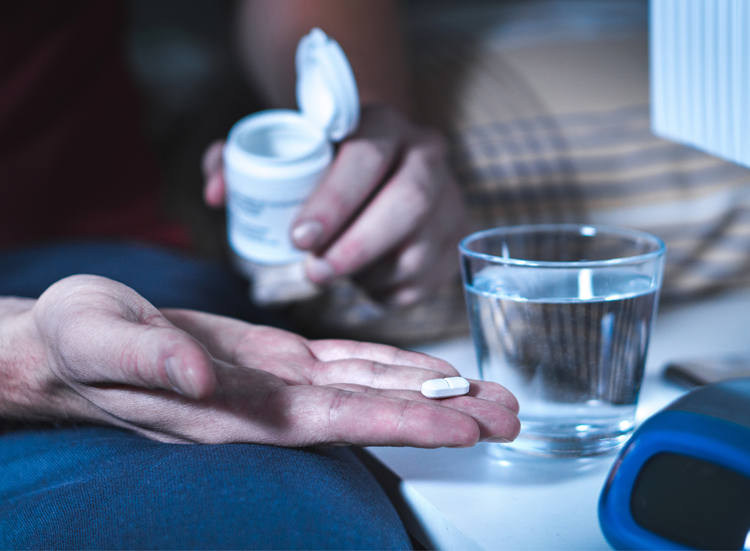Share your results
Please enter your email
Results shared!
We've sent a link to your email so you can access your results at any time.
It’s important to protect your skin from the harmful effects of the sun.

It’s important to protect your skin from the harmful effects of the sun. It's particularly important to take care of your skin as you age.
Your skin is the largest organ in your body and needs care and attention to stay healthy.
The older you are, the more time your skin has been exposed to environmental stressors.
Australia is blessed with plenty of sunny weather, but unfortunately has one of the highest rates of skin cancer in the world.
The good news is that there are simple steps you can take to keep safe in the sun.
It’s important to protect your skin from the harmful effects of the sun. It's particularly important to take care of your skin as you age.
Your skin is the largest organ in your body and needs care and attention to stay healthy.
The older you are, the more time your skin has been exposed to environmental stressors.
Australia is blessed with plenty of sunny weather, but unfortunately has one of the highest rates of skin cancer in the world.
The good news is that there are simple steps you can take to keep safe in the sun.
Read less...
UV is short for ultraviolet radiation and is the main cause of skin cancers.
Typically, the UV is at its highest levels in the middle of the day.
You're not only at risk of UV radiation when it's hot and sunny outside. The UV can be at harmful levels even when clouds are blocking the sun.
UV can also reflect off surfaces like water, concrete, and snow.
You should use sun protection when the UV level is 3 and above on the UV index.
UV is short for ultraviolet radiation and is the main cause of skin cancers.
Typically, the UV is at its highest levels in the middle of the day.
You're not only at risk of UV radiation when it's hot and sunny outside. The UV can be at harmful levels even when clouds are blocking the sun.
UV can also reflect off surfaces like water, concrete, and snow.
You should use sun protection when the UV level is 3 and above on the UV index.
Read less...
By keeping track of UV levels, and using sun protection, you can work, rest, and do what you love outdoors safely.
You can keep track of the UV index with the free SunSmart Global UV app. You can get the free SunSmart app from the Apple Store or Google Play:
(Here are some more helpful apps to check out too.)
By keeping track of UV levels, and using sun protection, you can work, rest, and do what you love outdoors safely.
You can keep track of the UV index with the free SunSmart Global UV app. You can get the free SunSmart app from the Apple Store or Google Play:
(Here are some more helpful apps to check out too.)
Read less...
A common misconception is that UV levels are only harmful during the summer months. Follow these five tips to look after your skin year round.
1. Wear protective clothing
Wearing protective clothing is your first line of defence against UV radiation. Ensure your clothes are in good condition and covering as much skin as possible.
2. Wear a hat
Wear a hat to protect you face, scalp, ears, and neck from the sun. Consider a broad brim or legionnaires hat as it offers more protection than a cap.
A common misconception is that UV levels are only harmful during the summer months. Follow these five tips to look after your skin year round.
1. Wear protective clothing
Wearing protective clothing is your first line of defence against UV radiation. Ensure your clothes are in good condition and covering as much skin as possible.
2. Wear a hat
Wear a hat to protect you face, scalp, ears, and neck from the sun. Consider a broad brim or legionnaires hat as it offers more protection than a cap.

3. Put on sunglasses
Close fitting wraparound sunglasses can help protect the skin around your eyes as well as the eyes themselves. Make sure they meet the Australian standards for UV protection.
4. Seek shade
If you need to be out and about during times when UV is at its highest, seek shade out of the direct sunlight. You can find a tree, use an umbrella, or seek the shade of a building.
5. Apply sunscreen correctly and regularly
Use a broad-spectrum sunscreen that protects you from both UVA and UVB radiation. Make sure it's SPF30 or higher. Apply the sunscreen 20 minutes before going into the sun and reapply every two hours.
3. Put on sunglasses
Close fitting wraparound sunglasses can help protect the skin around your eyes as well as the eyes themselves. Make sure they meet the Australian standards for UV protection.
4. Seek shade
If you need to be out and about during times when UV is at its highest, seek shade out of the direct sunlight. You can find a tree, use an umbrella, or seek the shade of a building.
5. Apply sunscreen correctly and regularly
Use a broad-spectrum sunscreen that protects you from both UVA and UVB radiation. Make sure it's SPF30 or higher. Apply the sunscreen 20 minutes before going into the sun and reapply every two hours.

Some medications can cause photosensitivity and increase your risk of sunburn. They can also cause other skin reactions when in contact with UV. Ask your health professional if photosensitivity is a side effect you may experience for any new or existing medications. This is particularly important if you use any of these common medications:
Some medications can cause photosensitivity and increase your risk of sunburn. They can also cause other skin reactions when in contact with UV. Ask your health professional if photosensitivity is a side effect you may experience for any new or existing medications. This is particularly important if you use any of these common medications:
.tmb-large%20card.png?sfvrsn=9e27de3b_2)
Skin cancer is easier to treat the earlier it is identified. Get to know your skin including any marks, moles, or freckles you may have.
If an existing mark changes colour, size, or texture, visit your health professional as soon as you can for a check-up.
There are specific skin cancer clinics that can check, map, and record the blemishes and moles on your skin.
Visit the SunSmart website to learn what to check for and how to check your skin.
Skin cancer is easier to treat the earlier it is identified. Get to know your skin including any marks, moles, or freckles you may have.
If an existing mark changes colour, size, or texture, visit your health professional as soon as you can for a check-up.
There are specific skin cancer clinics that can check, map, and record the blemishes and moles on your skin.
Visit the SunSmart website to learn what to check for and how to check your skin.
Read less...
Vitamin D is important for maintaining good health and ageing well. The good news is that you generally receive an adequate dose of Vitamin D through incidental UVB exposure.
It's important to use the five steps of sun protection, including sunscreen, any time the UV level is over 3. Sunscreen has a very minimal effect on Vitamin D absorption. If you have any concerns over Vitamin D deficiency, consult your health professional.
Keep track of UV levels particularly in late autumn and winter. UV tends to be higher during the middle of the day. Take the opportunity to enjoy the sunshine in the early morning or late afternoon.
Vitamin D is important for maintaining good health and ageing well. The good news is that you generally receive an adequate dose of Vitamin D through incidental UVB exposure.
It's important to use the five steps of sun protection, including sunscreen, any time the UV level is over 3. Sunscreen has a very minimal effect on Vitamin D absorption. If you have any concerns over Vitamin D deficiency, consult your health professional.
Keep track of UV levels particularly in late autumn and winter. UV tends to be higher during the middle of the day. Take the opportunity to enjoy the sunshine in the early morning or late afternoon.
Read less...
You may need more exposure to sunlight if you are naturally darker-skinned or if you cover more of your skin for religious reasons. Having naturally darker skin does not protect you against UV or skin cancer.
Learn about sun protection and dark skin at the SBS science website.
You may need more exposure to sunlight if you are naturally darker-skinned or if you cover more of your skin for religious reasons. Having naturally darker skin does not protect you against UV or skin cancer.
Learn about sun protection and dark skin at the SBS science website.
Read less...
If you need more information, get in touch with one of our helpful team on 1800 951 971.
If you'd like to learn more about staying sun safe, follow the links below:
Slip, slop, slap: Staying sun safe as an older person
If you need more information, get in touch with one of our helpful team on 1800 951 971.
If you'd like to learn more about staying sun safe, follow the links below:
Slip, slop, slap: Staying sun safe as an older person
SunSmart - get to know your skin
Cancer Council sun safety guides
Read less...Cancer Council Australia. (2023). Skin cancer. https://www.cancer.org.au/cancer-information/types-of-cancer/skin-cancer
Healthdirect Australia. (2024). Vitamin D deficiency. https://www.healthdirect.gov.au/vitamin-d-deficiency
Cancer Council Victoria. Protect your skin. SunSmart. https://www.sunsmart.com.au/protect-your-skin
Take our easy OpenUp quiz to get personalised advice and see suggested products, services and support in your local area or online.
Let's go!